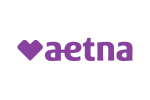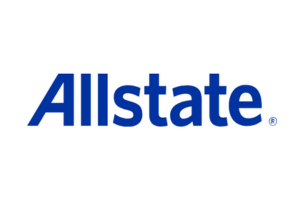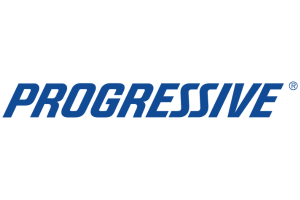Will health insurance cover PICC line?
Are you wondering if your health insurance will cover the cost of a PICC line? This article provides insights into whether health insurance plans typically cover this type of medical device, helping you understand your potential financial responsibilities.
Read more Secured with SHA-256 Encryption






Find the Lowest Car Insurance Rates Today
Quote’s drivers have found rates as low as $42/month in the last few days!




Table of Contents
Table of Contents


Insurance Content Managing Editor
Daniel S. Young began his professional career as chief editor of The Chanticleer, a Jacksonville State University newspaper. He also contributed to The Anniston Star, a local newspaper in Alabama. Daniel holds a BA in Communication and is pursuing an MA in Journalism & Media Studies at the University of Alabama. With a strong desire to help others protect their investments, Daniel has writt...
Daniel S. Young


Licensed Insurance Producer
Dani Best has been a licensed insurance producer for nearly 10 years. Dani began her insurance career in a sales role with State Farm in 2014. During her time in sales, she graduated with her Bachelors in Psychology from Capella University and is currently earning her Masters in Marriage and Family Therapy. Since 2014, Dani has held and maintains licenses in Life, Disability, Property, and Casualt...
Dani Best
Updated January 2025
When it comes to medical treatments and procedures, it is important to understand whether or not your health insurance will cover them. One such treatment is the placement of a Peripherally Inserted Central Catheter (PICC) line. In this article, we will discuss the basics of PICC lines, explore health insurance coverage for this procedure, provide guidance on how to check if your insurance covers it, and offer solutions if your insurance does not provide coverage.
Understanding the Basics of PICC Line
What is a PICC Line?
A PICC line is a long, thin catheter that is inserted into a vein in the arm and threaded through to a large vein near the heart. It is a flexible and easily removable device that allows for the administration of medications, fluids, and nutrients directly into the bloodstream.
The process of inserting a PICC line involves a trained healthcare professional using ultrasound guidance to locate a suitable vein. Once the vein is identified, the catheter is carefully inserted through a small incision in the skin and advanced until it reaches the desired position near the heart. The catheter is then secured in place with a dressing to prevent movement or accidental removal.
Once the PICC line is in place, it can remain in the patient’s arm for an extended period, ranging from weeks to months, depending on the individual’s treatment needs. The length of the catheter allows for easy access to the bloodstream, eliminating the need for repeated needle sticks.
Why is a PICC Line Used?
A PICC line is used when a patient requires long-term intravenous treatment, such as chemotherapy, antibiotics, or total parenteral nutrition (TPN). It eliminates the need for repeated needle sticks and provides a more comfortable and convenient method for administering medications.
Chemotherapy, a common treatment for cancer, often involves the administration of powerful drugs that target and destroy cancer cells. These medications are typically administered intravenously to ensure they reach the bloodstream quickly and effectively. A PICC line allows for the continuous delivery of chemotherapy drugs, reducing the discomfort and inconvenience associated with frequent injections.
In addition to chemotherapy, a PICC line can also be used for the administration of antibiotics. When a patient develops a severe infection, intravenous antibiotics may be necessary to combat the bacteria. By using a PICC line, healthcare providers can administer these medications directly into the bloodstream, ensuring a rapid response and effective treatment.
Total parenteral nutrition (TPN) is another common use for a PICC line. TPN is a specialized form of nutrition that provides all the necessary nutrients and calories directly into the bloodstream. It is typically used when a patient is unable to eat or digest food properly. The PICC line allows for the continuous delivery of TPN, ensuring that the patient receives the necessary nutrients for proper healing and nourishment.
Overall, a PICC line offers numerous benefits for patients requiring long-term intravenous treatment. It provides a reliable and convenient method for administering medications, reduces the discomfort associated with repeated needle sticks, and allows for the continuous delivery of fluids and nutrients directly into the bloodstream.
Free Health Insurance Comparison
Compare Quotes From Top Companies and Save
Secured with SHA-256 Encryption
Health Insurance Coverage for PICC Line
A PICC line, or Peripherally Inserted Central Catheter, is a medical device used for long-term intravenous therapies. It is commonly used when patients require frequent or long-term access to their veins for medications, chemotherapy, or other treatments. The placement of a PICC line involves inserting a thin, flexible tube into a vein in the arm, which is then threaded through to a larger vein near the heart.
Factors Influencing Insurance Coverage
When it comes to health insurance coverage for a PICC line, there are several factors that can influence the extent of coverage. One of the primary factors is the type of insurance policy you have. Different insurance providers offer various types of policies, such as private insurance, employer-sponsored plans, or government-funded programs like Medicare and Medicaid. The coverage and benefits provided by these policies can vary significantly.
Another factor that can impact insurance coverage is the specific medical condition that necessitates the use of a PICC line. Certain medical conditions, such as cancer, infections, or chronic illnesses, may be more likely to be covered by insurance as they require long-term treatments that necessitate a PICC line. However, coverage may also depend on the severity and urgency of the condition.
Additionally, insurance coverage for a PICC line is influenced by the guidelines set by your insurance provider. Each insurance company has its own set of coverage policies and criteria that determine whether a PICC line is considered medically necessary and eligible for coverage. These guidelines typically take into account factors such as the patient’s medical history, previous treatment options, and the recommendation of the treating physician.
Typical Costs Associated with PICC Line
The costs associated with a PICC line placement can vary depending on several factors. One of the primary factors is the provider or healthcare facility where the procedure is performed. Different hospitals or clinics may have different pricing structures, which can impact the overall cost of the PICC line placement.
In addition to the provider, the location of the procedure can also affect the costs. Healthcare costs can vary significantly between different regions or countries, so the cost of a PICC line placement may be higher or lower based on where you are receiving the treatment.
Your insurance coverage plays a crucial role in determining the out-of-pocket expenses associated with a PICC line. While some insurance policies may cover the majority of the costs, others may require you to pay a portion of the expenses through deductibles, co-pays, or co-insurance. It is essential to review your insurance policy and understand the coverage details to have a clear idea of the potential costs.
The typical costs associated with a PICC line placement include the insertion procedure itself, the catheter, and the necessary supplies such as dressings, flushes, and caps. The insertion procedure involves the expertise of a healthcare professional, ensuring proper placement and minimizing the risks of complications. The catheter, which is the actual tube inserted into the vein, can vary in cost depending on the type and brand.
It is important to note that potential complications or follow-up care required after the PICC line placement may also contribute to the overall costs. Complications can include infections, blood clots, or mechanical issues with the catheter, which may require additional medical attention and treatment.
In conclusion, health insurance coverage for a PICC line can be influenced by various factors, including the type of insurance policy, the medical condition, and the guidelines set by the insurance provider. The costs associated with a PICC line placement can vary based on the provider, location, and insurance coverage, encompassing the insertion procedure, the catheter, supplies, and potential complications or follow-up care. Understanding these factors and discussing them with your healthcare provider and insurance company can help you navigate the financial aspects of a PICC line placement.
How to Check if Your Insurance Covers PICC Line
Contacting Your Insurance Provider
If you are unsure about whether or not your insurance will cover a PICC line, the best course of action is to contact your insurance provider directly. They can provide you with specific information regarding your coverage and any requirements or documentation needed for approval.
When reaching out to your insurance provider, it’s important to have all your necessary information handy. This includes your insurance policy number, personal details, and any relevant medical records or documentation. By being prepared, you can ensure a smoother conversation and increase the likelihood of receiving accurate information.
It’s worth noting that insurance providers may have different policies and guidelines when it comes to covering PICC lines. Some may require prior authorization, while others may have certain limitations or exclusions. By speaking directly with your insurance provider, you can gain a better understanding of what is covered under your specific plan.
Understanding Your Insurance Policy
Reviewing your insurance policy is also crucial in determining coverage for a PICC line. Look for any provisions or exclusions related to medical devices or procedures. Additionally, pay attention to any preauthorization requirements or limitations that may apply.
Insurance policies can often be complex and filled with technical jargon. If you find it challenging to understand certain terms or provisions, don’t hesitate to reach out to your insurance provider for clarification. They can help explain the details of your policy and how it relates to the coverage of a PICC line.
Moreover, it’s essential to keep in mind that insurance policies can change over time. What may have been covered in the past may not be covered now, or vice versa. Therefore, it’s always a good idea to review your policy periodically to stay up to date with any changes or updates that may affect your coverage.
In addition to your insurance policy, you may also want to check if your healthcare provider has any specific contracts or agreements with certain insurance companies. These agreements can sometimes impact coverage and reimbursement rates for medical procedures, including the placement and maintenance of a PICC line.
By taking the time to thoroughly review your insurance policy and understanding its provisions, you can make more informed decisions regarding your healthcare and ensure that you are aware of any potential costs or limitations associated with a PICC line.
Case Studies: Insurance Coverage for PICC Line
Example of Full Coverage
In some cases, health insurance policies will cover the full cost of a PICC line placement when it is deemed medically necessary. This means that you would not be responsible for any out-of-pocket expenses associated with the procedure, supplies, or follow-up care.
Example of Partial Coverage
In other instances, health insurance plans may provide partial coverage for a PICC line. This means that you would still have some out-of-pocket expenses, such as copayments or deductibles, that you would need to cover. It is important to have a clear understanding of these costs before proceeding with the procedure.
Free Health Insurance Comparison
Compare Quotes From Top Companies and Save
Secured with SHA-256 Encryption
What to Do if Your Insurance Doesn’t Cover PICC Line
Exploring Alternative Payment Options
If your insurance provider does not cover a PICC line or if the coverage is limited, it is worth exploring alternative payment options. Some healthcare facilities offer payment plans or financial assistance programs that can help alleviate the financial burden associated with the procedure.
Seeking Financial Assistance Programs
In addition to payment plans, there may be financial assistance programs available to help those who are unable to afford a PICC line placement. Non-profit organizations, local charities, and government programs may offer grants or subsidies to eligible individuals.
In conclusion, the coverage of a PICC line by health insurance depends on various factors. It is essential to understand your insurance policy, contact your insurance provider, and explore alternative options if coverage is limited. By being proactive and well-informed, you can navigate the financial aspect of a PICC line placement and ensure you receive the necessary medical treatment without undue financial strain.
Frequently Asked Questions
Will health insurance cover the cost of a PICC line?
Yes, most health insurance plans will cover the cost of a PICC line as long as it is deemed medically necessary by your healthcare provider.
What is a PICC line?
A PICC line, or Peripherally Inserted Central Catheter, is a long, thin tube that is inserted into a vein in your arm and threaded through to a large vein near your heart. It is used to administer medications, fluids, and other treatments directly into your bloodstream.
Why would someone need a PICC line?
A PICC line may be necessary for individuals who require long-term intravenous treatments, such as chemotherapy, antibiotics, or total parenteral nutrition (TPN). It provides a more reliable and convenient access point for these treatments compared to traditional IV lines.
How much does a PICC line insertion procedure cost?
The cost of a PICC line insertion procedure can vary depending on factors such as the healthcare provider, location, and specific insurance coverage. However, it typically ranges from $1,500 to $3,500.
What are the potential risks and complications associated with a PICC line?
While PICC lines are generally considered safe, there are potential risks and complications. These can include infection at the insertion site, blood clots, vein damage, and catheter malfunction. It is important to follow proper care and maintenance instructions provided by your healthcare provider.
How long can a PICC line stay in place?
A PICC line can stay in place for several weeks to several months, depending on the individual’s treatment needs. Your healthcare provider will determine the appropriate duration and monitor the line for any signs of complications or the need for replacement.
Get a FREE Quote in Minutes
Insurance rates change constantly — we help you stay ahead by making it easy to compare top options and save.



